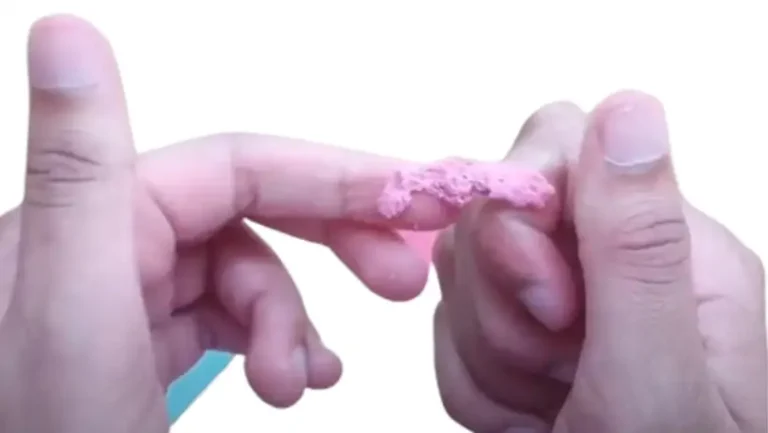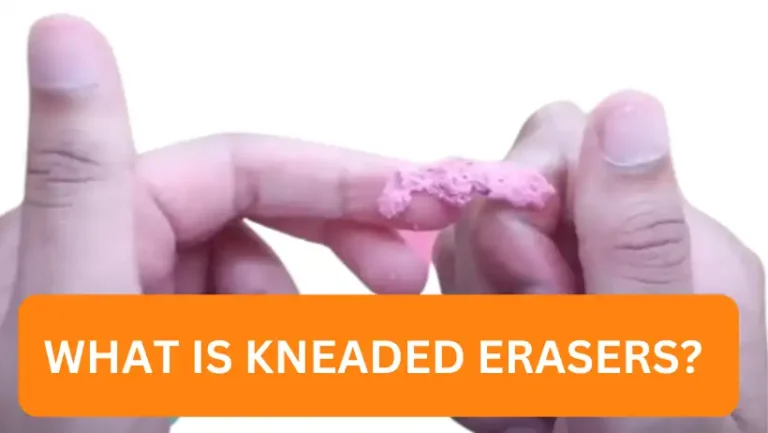Types of Erasers: Which One is Right for You?
Erasers are an essential tool for anyone using pencils. They come in various types, each with its own unique qualities. From gum erasers to vinyl erasers, foam erasers to kneaded erasers, there’s a perfect eraser for every need.
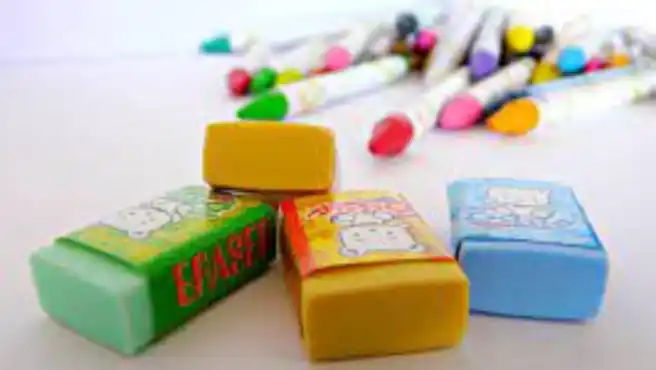
Read on to discover the different types of erasers and find the best one for flawless corrections.
Key Takeaways:
Support us by using our links. We may earn a commission, but it won’t cost you extra. Win-win shopping
- There are various types of erasers available for different purposes.
- Gum erasers, vinyl erasers, foam erasers, and kneaded erasers are some of the popular eraser types.
- Each eraser type has its own unique qualities and benefits.
- Consider factors like eraser material, ease of use, and erasability when choosing the best eraser for your needs.
- Whether you’re looking for a versatile eraser, a student-friendly eraser, or an eraser specifically designed for drawing, there’s an option that will suit your requirements.
types of erasers
There are several types of erasers available for different purposes. Here are some of the most common types of erasers:
Gum eraser
A gum eraser, often called an “art gum” eraser, feels soft and slightly translucent with a gummy texture. It’s designed to absorb graphite, which crumbles as you erase, being gentle on the paper.
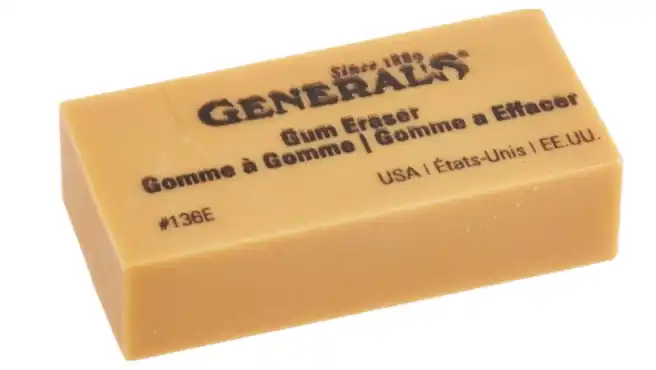
So, you might wonder:
- Does it leave a residue? Yes, like all erasers, it leaves some residue, but it’s usually not a problem.
- Which pencils does it erase? It’s great for graphite but less effective on colored pencils or ink.
- Who benefits most from a gum eraser? Artists who use various paper types and prefer a softer eraser find it handy.
- Can it handle fine lines or details? It’s not the most precise for that; consider a kneaded eraser for those.
- How long does it last? Gum erasers crumble over use, so the lifespan varies by brand and usage.
In my experience, gum erasers offer a unique soft touch, ideal for gentle erasing without harming your artwork. While they might not last as long as other erasers, they’re a valuable tool in an artist’s kit.
rubber eraser
A rubber eraser, the pencil artist’s trusty sidekick, is great for graphite but needs a gentle hand to avoid paper tears. Made of synthetic rubber, it leaves less dust than its pure rubber counterparts but may leave smudges.
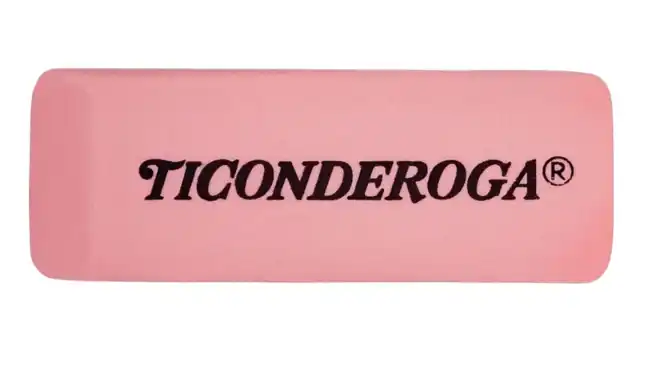
Now, let’s clear some common doubts:
- Do they leave residues? Yes, like all erasers, they leave material behind.
- Which pencils do they work on? They’re best for graphite.
- Who can use them? Everyone can; they’re economical at $0.25 to $0.50 per wedge.
- Can they erase colored pencils? Yes, but dedicated colored pencil erasers might work better.
- Any drawbacks? They might smear and struggle with ink or charcoal. Some folks may be latex-sensitive.
In my experience, rubber erasers are reliable for everyday erasing tasks, especially when you’re working with graphite. However, it’s good to have specialized erasers on hand for different media and fine details.
kneaded eraser
A kneaded eraser, also called a putty rubber, is a flexible tool artists adore. It’s made from unvulcanized rubber, known for its stretchy, compressible, and moldable nature, ideal for precision work, lifting graphite, and highlighting. Best for graphite, charcoal, pastel, and chalk.
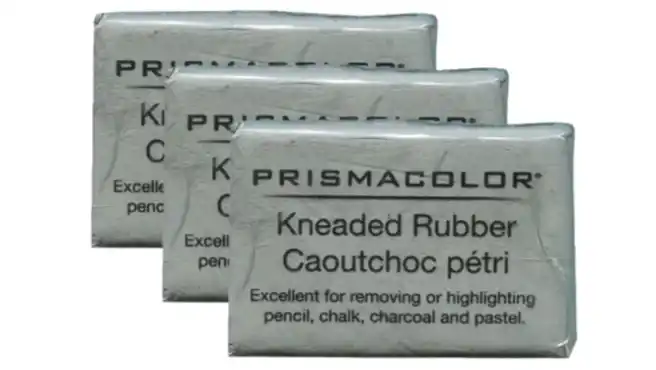
Let’s tackle some key questions:
- Residues? They don’t leave crumbs but can get dirty; knead until light gray to clean.
- Pencils? Ideal for graphite, charcoal, pastel, and chalk but not as effective on others.
- Who benefits? Artists working with those mediums, needing precision, and not erasing large areas.
- Usage tips? Press, rotate, and pull gently; knead periodically for optimal effectiveness.
- DIY option? Affordable to buy, but you can create one from eraser crumbs by rubbing and kneading, though results vary.
From my experience, kneaded erasers are artists’ go-to for detail work and lifting graphite, but gentle handling is key for best results.
Read: How to use Kneaded Erasers Like a Pro
vinyl or plastic erase
A vinyl or plastic eraser, also known as a drafting eraser, is a hard and rigid type of eraser that is capable of doing heavy-duty erasing. It is made of a clean and complete erasing material, which makes it a favorite among drafters and artists who need to erase ink from a page.
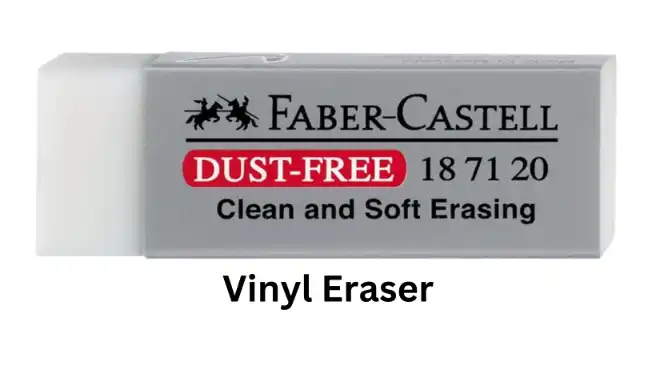
Curious minds might ask:
- Residues? No, vinyl erasers erase cleanly.
- Pencils? They handle all graphite pencils.
- Ink? Yes, they tackle ink too.
- Paper type? They shine on smooth, heavyweight papers, like Canson Bristol smooth.
- Who benefits? Artists who need heavy-duty or ink erasing.
- Harmful substances? Not all contain harmful phthalate plasticizer. For example, Faber-Castell PVC-Free erasers are safe.
- Paper damage? Yes, if not careful, especially on softer textured papers. Use gentle strokes with light pressure.
In my experience, vinyl erasers are reliable allies for artists dealing with ink and heavy-duty erasing, but a gentle hand is key to preserving your paper.
eraser pencil
An eraser pencil, tailor-made for artists, erases pencil and graphite marks effortlessly. Resembling a regular pencil, it houses an eraser core to sharpen and precision-erase small details and highlights.
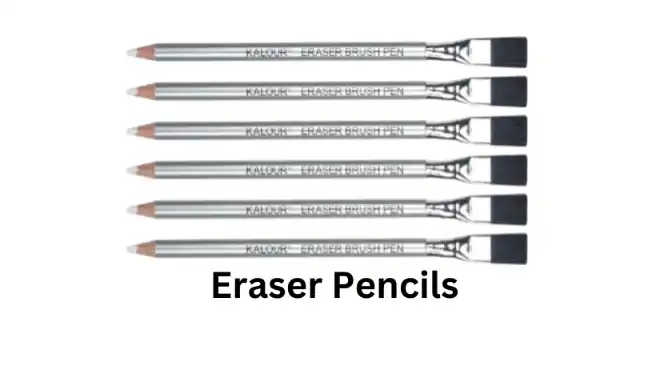
Here are answers to your pressing questions:
- Residues? They erase cleanly but may vary with paper type and pressure.
- Pencils? Perfect for pencil and graphite but less effective on colored pencils or ink.
- Best-suited users? Artists who work with pencils and need precise erasing for details and highlights. Also handy for students and professionals for corrections.
- Preserving details? Use the eraser pencil’s tip with gentle pressure. A pen eraser with a clean, cut edge can handle fine lines and textures.
- Other erasers? Besides eraser pencils, artists have a range of options, like kneaded erasers, plastic erasers, and gum erasers, each with its own advantages and disadvantages.
In my experience, eraser pencils are invaluable for artists who require precise erasing of small details and highlights, ensuring their work remains flawless.
glass eraser
A glass eraser, a Faber-Castell gem, is a niche tool crafted for erasing India ink from transparent paper. With its fiberglass nib and refillable core, it’s precision in your hand.
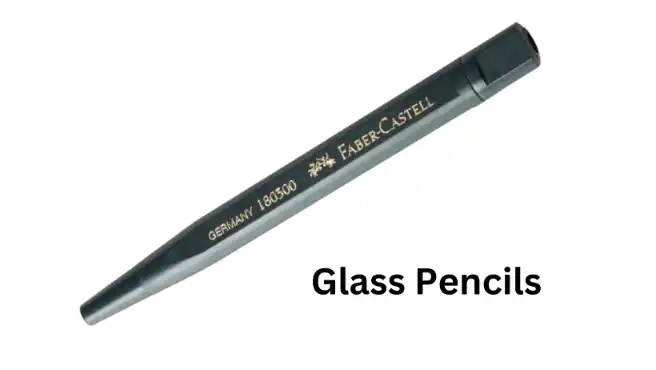
Your questions addressed:
- Residues? No, they erase ink cleanly, leaving no visible residue.
- Pencils? They’re ink specialists, not for pencils or graphite.
- Ideal users? Artists working with India ink on transparent paper, not for pencil or graphite marks.
- Other uses? Surprisingly, they can tackle small rust spots on cars or at home.
In my experience, glass erasers are the go-to for artists working with India ink on transparent paper. Their precision makes them indispensable for this niche.
Electric Erasers: Your Precision Tool
Electric erasers are a specialized type of eraser that is fastened to a rotor of a small electric motor. They are designed to erase pencil and graphite lead marks quickly and efficiently, making them a popular choice among artists and drafters.
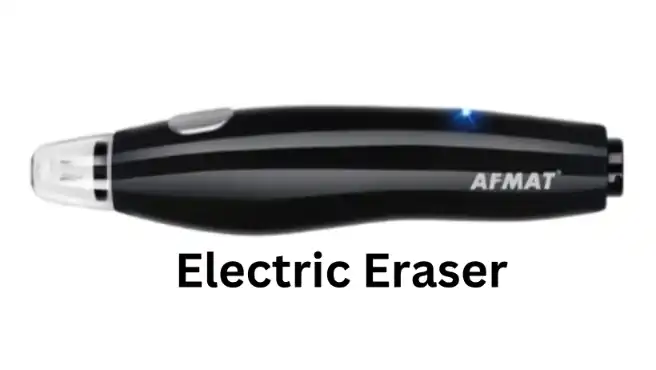
You Might Wonder…
- Residue-Free Magic: Worried about smudges? Fear not. Electric erasers erase without a trace.
- Pencil Power: They’re your go-to for erasing pencil and graphite marks, but less effective with colored pencils or ink.
- For the Quick and Precise: If you crave fast and precise erasing for details and highlights, or if you’re a student or pro in a hurry, electric erasers are your dream tool.
- Not All Perfection: Some find them less precise than kneaded or precision erasers, and there’s the matter of batteries or power sources.
- Easy Erasing: To use, just turn it on, gently glide over your marks, and avoid paper damage with a light touch. Some come with various eraser tips.
- Alternatives Abound: There’s a world of erasers out there – rubber, gum, vinyl, kneaded, and eraser pencils. Each has its strengths and quirks.
These tips should help you harness the power of electric erasers and other eraser wonders.
Choosing the right eraser
When choosing the right eraser for a specific task, consider the following:
-
Determine your primary use: If you’re sketching or drawing, you’ll need erasers that can handle details and broad strokes. For general writing and everyday use, a standard eraser may suffice.
-
Consider the paper type: Some erasers work better with specific paper types. For instance, gum erasers are softer and suitable for various paper textures, while plastic erasers are effective and gentle on paper.
-
Evaluate the level of precision required: If you need to erase fine details, opt for a kneaded eraser or a precision eraser with a small diameter, such as the Tombow Mono Zero. For erasing larger areas, a block eraser may be more appropriate.
-
Take into account the type of medium used: Different erasers are tailored to specific mediums. Plastic erasers are generally effective for graphite, while kneadable erasers are great for correcting charcoal, pencil, and pastel work. Gritty erasers or high-quality plastic erasers are ideal for colored pencils.
-
Pay attention to eraser performance: Test the eraser on scratch paper to determine the necessary pressure for the paper and eraser type you’re using. Additionally, consider the cleanliness of the eraser. Gum erasers, for instance, can be a bit messy but are incredibly useful. On the other hand, kneaded erasers don’t leave smudges or harm the paper.
Conclusion
In conclusion, there are various types of erasers available for different purposes. Whether you’re looking for a versatile eraser for general use, a student-friendly eraser, or an eraser specifically designed for drawing, there’s an option that will suit your needs.
Consider the factors mentioned in each section, such as eraser material, ease of use, and erasability, to make an informed decision. With the right eraser, you can achieve perfect corrections every time.

